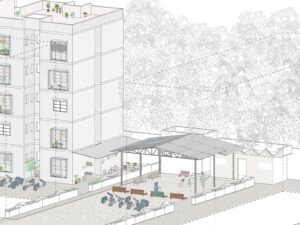
Like Louis Kahn asked a brick what it wants to be and Correa asked a site what it wants to be; it is time we ask the same question to our cities and listen intently to what they have to say. This conversation is crucial for Nasik city, that has so far grown under the shadow of the great metropolises of Mumbai & Pune, which is carving its own trajectory of development, partly, unique to it.
Nasik is an ancient place. Many myths of the land, form part of the consciousness of the people, simultaneously transcending and connecting multiple places in India to create a network of myths anchored in specific sacred spots and tirthas that convey meanings manifesting in landscape of Nasik. Nasik’s landscape is better understood through myths and stories assisting in identification, orientation and finding one’s place in the world through myth-landscape association. Thus, seemingly inert matter such as rocks, mountains, trees, rivers, streams, etc. become meaningful helping us to dwell and take roots in the place.


Nasik region is surrounded by mountains where the ancient caves exist. The chthonic forces are brought inside and given place in many black basalt temples. The natural mountain-cave type is expressed in its man-made counterpart—the temple with its mountainesque spire and cave-like sanctum sanctorum. Nasik city’s site gathers many meanings for humans to take root and dwell. On the banks of Godavari where the river creates a ford to cross-over (literally the meaning of tirtha), Nasik’s old city is settled. The undulating terrain comprising of 9 small hillocks further created sub-places with their own characteristics. Old Nasik settlement thus has a strong romantic landscape and the settlement expresses this character through its pattern. As if the forest that existed prior to the settlement is replaced and expressed in the ‘built forest’ of the settlement. Where the ground may have cleared and opened up for more light to pour in, such places became sacred and divine like many kunds & ghats.
The new city doesn’t afford richness of meanings found in the old city which explains the brain drain. Future development unaligned with the genius loci would further alienate people and merely manifesting the zeitgeist in ever new forms would only reproduce hollow meaningless shells. Aligning Nasik’s genius with the zeitgeist would bring the ‘true’ development which is always ‘new.’

Source: Author
“Well-written piece. Love the way it opens. More thought should have been given to the conclusion, however.” – Arpita Das, Mentor, Urban Imprints
“Good title, interesting opening, but somehow the ideas of brain drain, zeitgeist in the last section seem a bit codified and simplistic and take away from the piece.” – Peeyush Sekhsaria, Mentor, Urban Imprints






